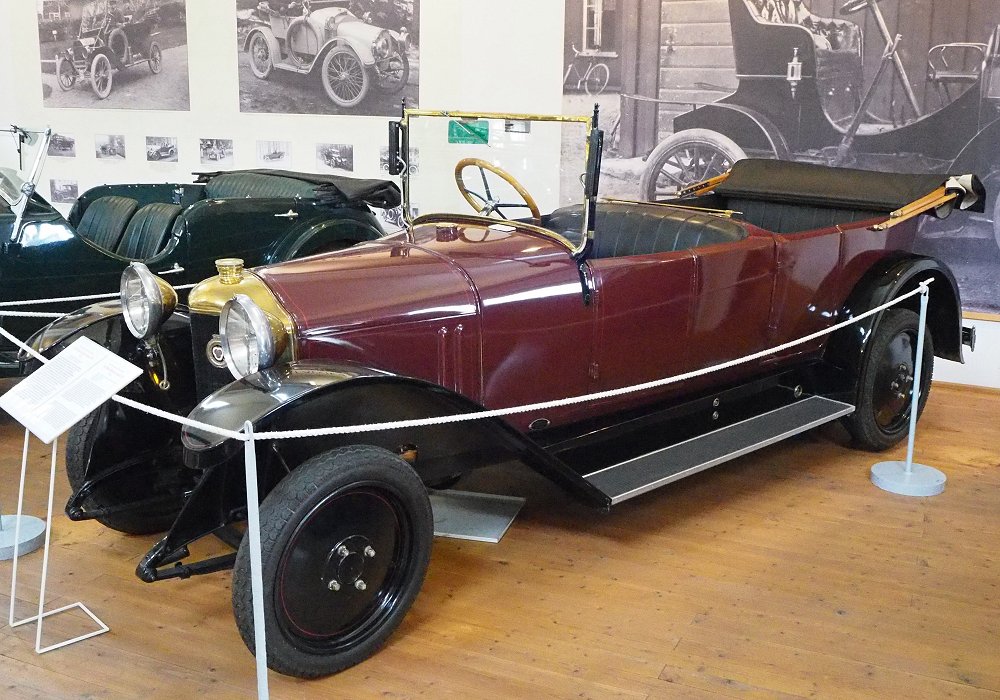Description
The De Dion-Bouton Type ID 10 CV Torpedo was introduced during the early 1920s, reflecting the company’s continued evolution into producing refined touring cars for a middle-class clientele. By this time, De Dion-Bouton had moved away from its earlier reputation for lightweight cyclecars and tricycles, focusing instead on more conventional automobiles that offered both reliability and modern styling.
The “10 CV” in the name referred to the car’s French fiscal horsepower rating, a tax classification based on engine size. In practical terms, the Type ID was powered by a four-cylinder petrol engine with a displacement of around 1.8 to 2.0 litres. This engine was designed to be both efficient and robust, producing approximately 20 to 25 real horsepower. It employed a side-valve layout with magneto ignition and was cooled by a water circulation system through a front-mounted radiator.
The engine was paired with a manual gearbox, usually with three forward speeds and one reverse. The transmission was operated via a floor-mounted gear lever, and drive was delivered to the rear wheels through a shaft, a now-standard configuration that had replaced the chain drives used in earlier De Dion models. The clutch was typically a multi-disc or cone type, offering a smooth engagement suitable for touring conditions.
The chassis was a conventional ladder-frame made of pressed steel, built to be strong and flexible enough for the rough and variable road conditions of the era. Suspension was handled by semi-elliptical leaf springs at both the front and rear, with solid axles providing durability. Braking was mechanical, acting only on the rear wheels, although a transmission brake was often included for additional stopping power.
The “Torpedo” body style was popular at the time and gave the car a sleek, elongated silhouette. It was an open touring car design, with a gently rounded rear, flowing fenders, and a folding canvas roof. The layout usually accommodated four passengers in two rows, and some variants featured dual cowl configurations with a separate windscreen for rear passengers. The windscreen was upright and often foldable, and the doors were cut low to enhance the car’s sporting character.
The interior of the Type ID Torpedo was simple but functional. The dashboard contained basic instrumentation such as a speedometer, oil pressure gauge, and ignition controls. The seats were upholstered in leather or imitation leather, and the cabin was finished with painted or enameled surfaces rather than luxury materials. The driving position was upright, offering good visibility and ease of operation.
Wheels were typically wooden-spoked artillery types or steel discs, fitted with narrow-section pneumatic tyres. Lighting was electric, replacing the earlier acetylene systems, and horn and electrical accessories were powered by a magneto or small generator.
The De Dion-Bouton Type ID 10 CV Torpedo was appreciated for its ease of use, moderate power, and practical touring ability. It appealed to drivers who wanted a well-built and stylish open car that could handle everyday use, weekend excursions, or light professional duties. While not considered a luxury automobile, it was a step above the smallest economy cars of the era.
Today, the Type ID is a seldom-seen but historically significant example of De Dion-Bouton’s 1920s offerings. Restored models occasionally appear in vintage rallies and car shows, offering a glimpse into the kind of refined, middle-tier motoring experience available to European drivers in the years following the First World War.
